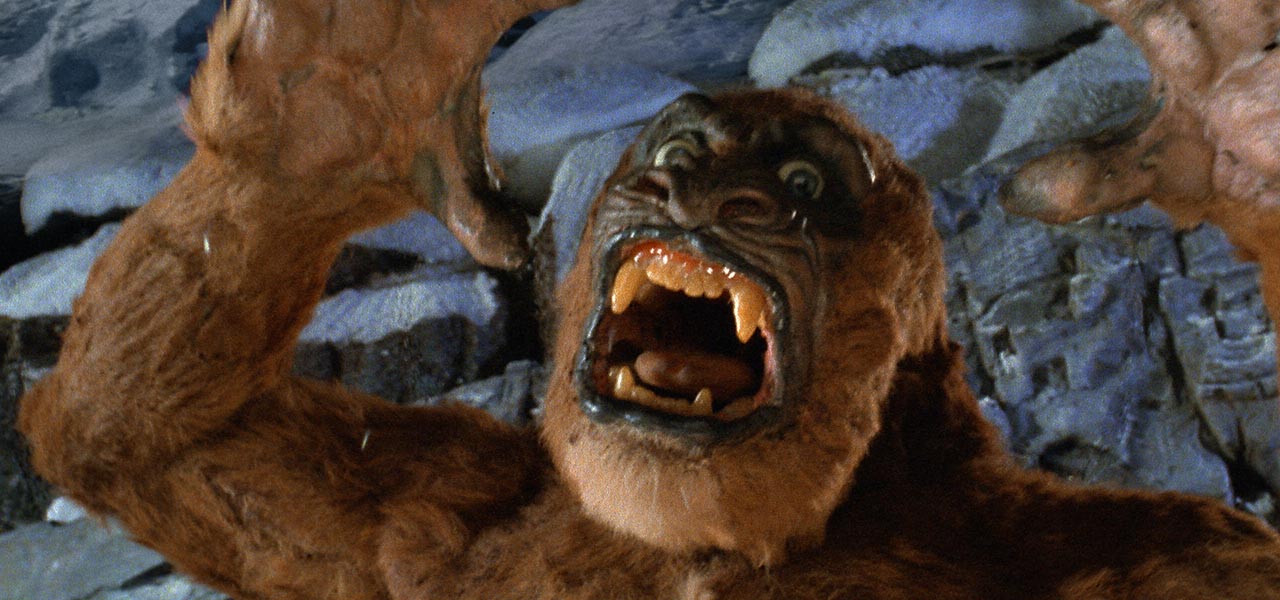
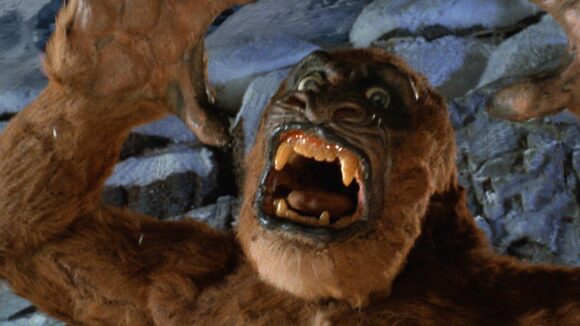
Nearly A Half-Century In The Making, David Allen’s Stop-Motion Hybrid ‘The Primevals’ Is Finally Finished
In the winter of 1978, Cinefantastique magazine published an alluring cover, painted by fantasy and science fiction illustrator Barclay Shaw, depicting a bipedal Lizard Man at a high-tech control panel dispatching flying saucers to primordial planet Earth. The 18-page cover story by Paul Mandell, billed as a ‘preproduction’ report, heralded what promised to be a grand creature feature – The Primevals – magnum opus of stop-motion animator David W. Allen.
Allen introduced the project as an outgrowth of his stop-motion promo reel for Raiders of the Stone Ring, an Edgar Rice Burroughs-style fantasy. Allen characterized his new feature as a more serious-minded adventure. The script by Allen and Randy Cook follows an expedition investigating the capture of a Himalayan yeti. Dr. Claire Collier (Juliet Mills) and anthropology scholar Matt Connor (Richard Joseph Paul) join mercenary guide Rondo Montana (Leon Russom) and research colleague Kathleen Reidel (Walker Brandt) to seek living specimens after recent yeti attacks. Together, the explorers stumble on a prehistoric valley where reptilian aliens have been stranded for centuries. Fast-forward more than four decades.
Forty-six years after the CFQ story appeared, The Primevals premiered at Fantasia Film Festival in Toronto, Canada, in July 2023. Three months later, the film played at the 56th Sitges International Fantastic Film Festival in Spain. A few months later, the film opened in a limited theatrical release and then launched on streaming platforms this past May. A three-disc collector’s edition Blu-ray box set arrives in August.
“It’s funny,” remarked Chris Endicott, Allen’s long-time collaborator and visual effects supervisor of the final version of The Primevals, “CFQ publisher Fred Clarke was a big fan of stop-motion, and he and Dave were in pretty close contact. Just before that magazine was going to press, David told Fred, ‘The movie is not going forward anymore, so I don’t know what you want to do about your cover story.’ At that point, no one knew it was going to take this long to pick it back up. David was under the impression that it might get going soon, but he felt sorry for Fred. They both decided that running the story would maybe help catch more interest.”
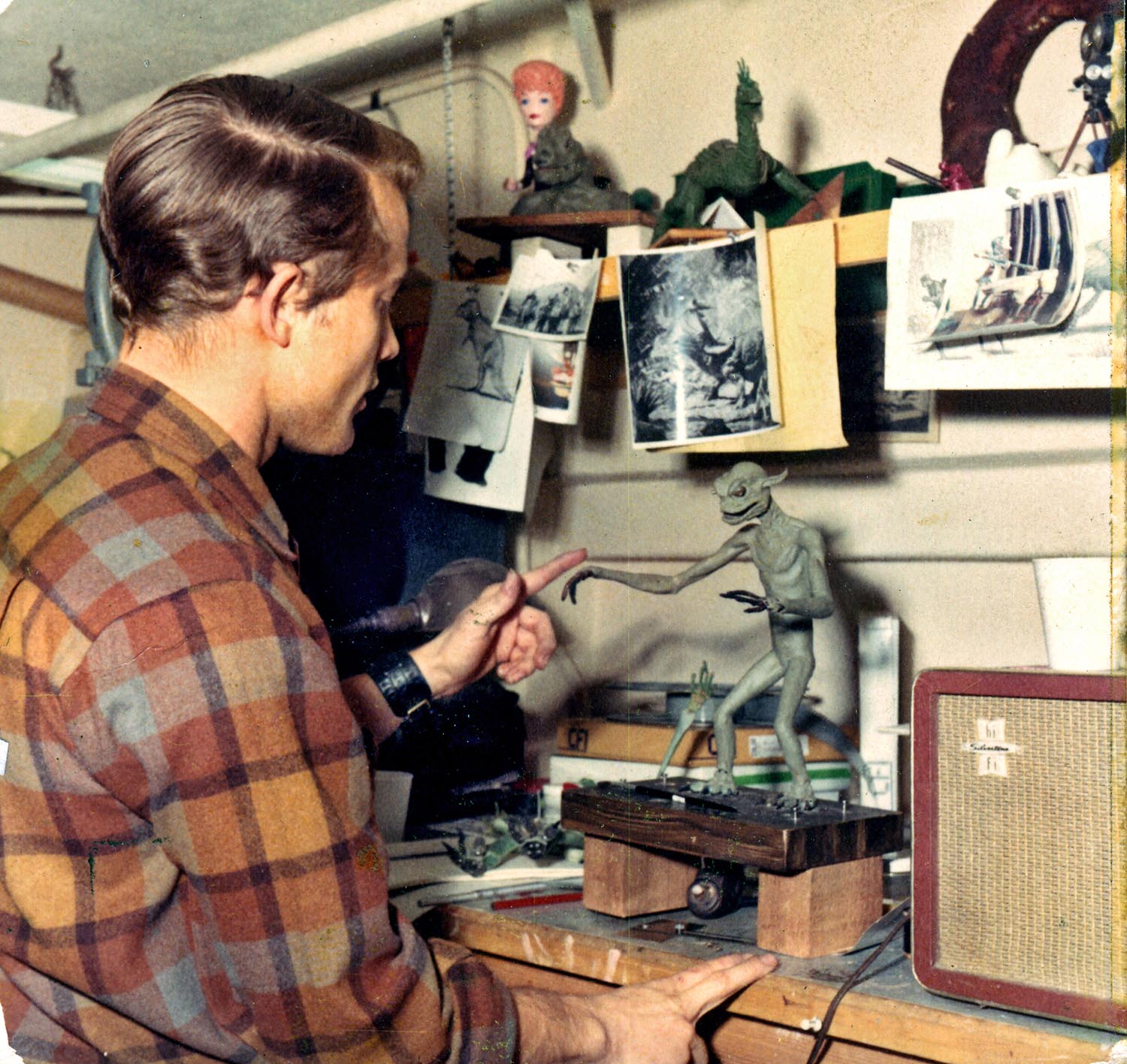
Preproduction, 1978
Fan interest, in fact, led Endicott to join Allen’s team initially as protégé in 1990. By then, stories of the 1978 production at Allen’s studio in Burbank, California, were legendary. The film’s all-star effects team carried the torch of stop-motion artistry from Willis O’Brien and Ray Harryhausen and went on to blaze trails. Future Oscar-, Emmy- and VES-award-winners among Allen’s crew included Randy Cook (The Lord of the Rings), David Stipes (multiple Star Trek series), Ken Ralston (Forrest Gump), Phil Tippett (Mad God), Dave Carson (Jurassic Park) and Tom St. Amand (E.T. The Extra-terrestrial).
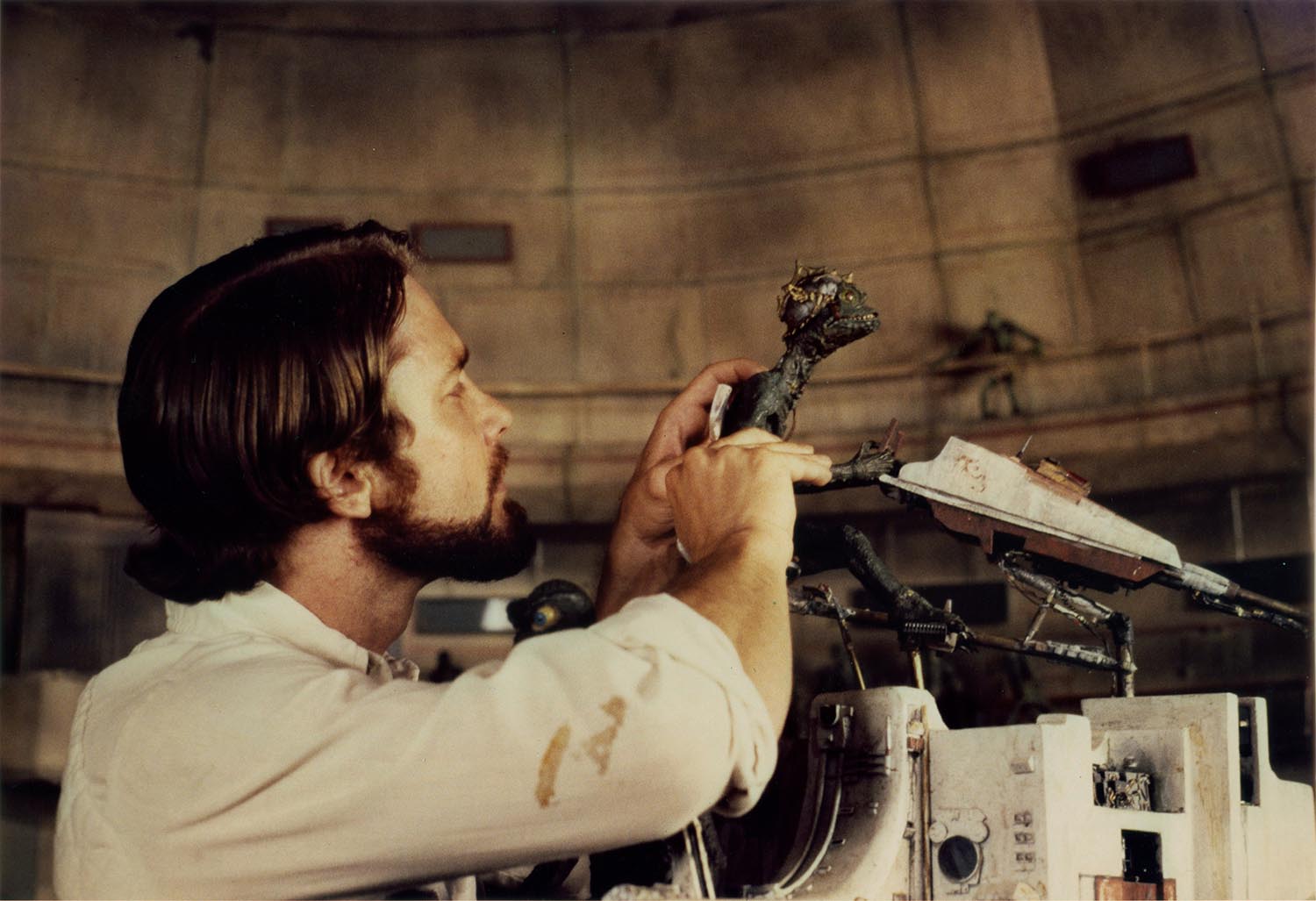
“They were all involved in that period, from February to July [1978],” Endicott told Cartoon Brew. “It was Tom [St. Amand’s] first professional credit, making armatures for the Lizard Men. Phil [Tippett] did sculpting work on a yeti puppet and a sloth creature – both of which, unfortunately, didn’t make it into the movie. Ken Ralston was co-animator and performed sculptural improvements to Allen’s Lizard Men designs. In the extras on the Blu-ray set, there are a few animation shots from the ’78 incarnation, and some of that was done by Ken, and some by David.”
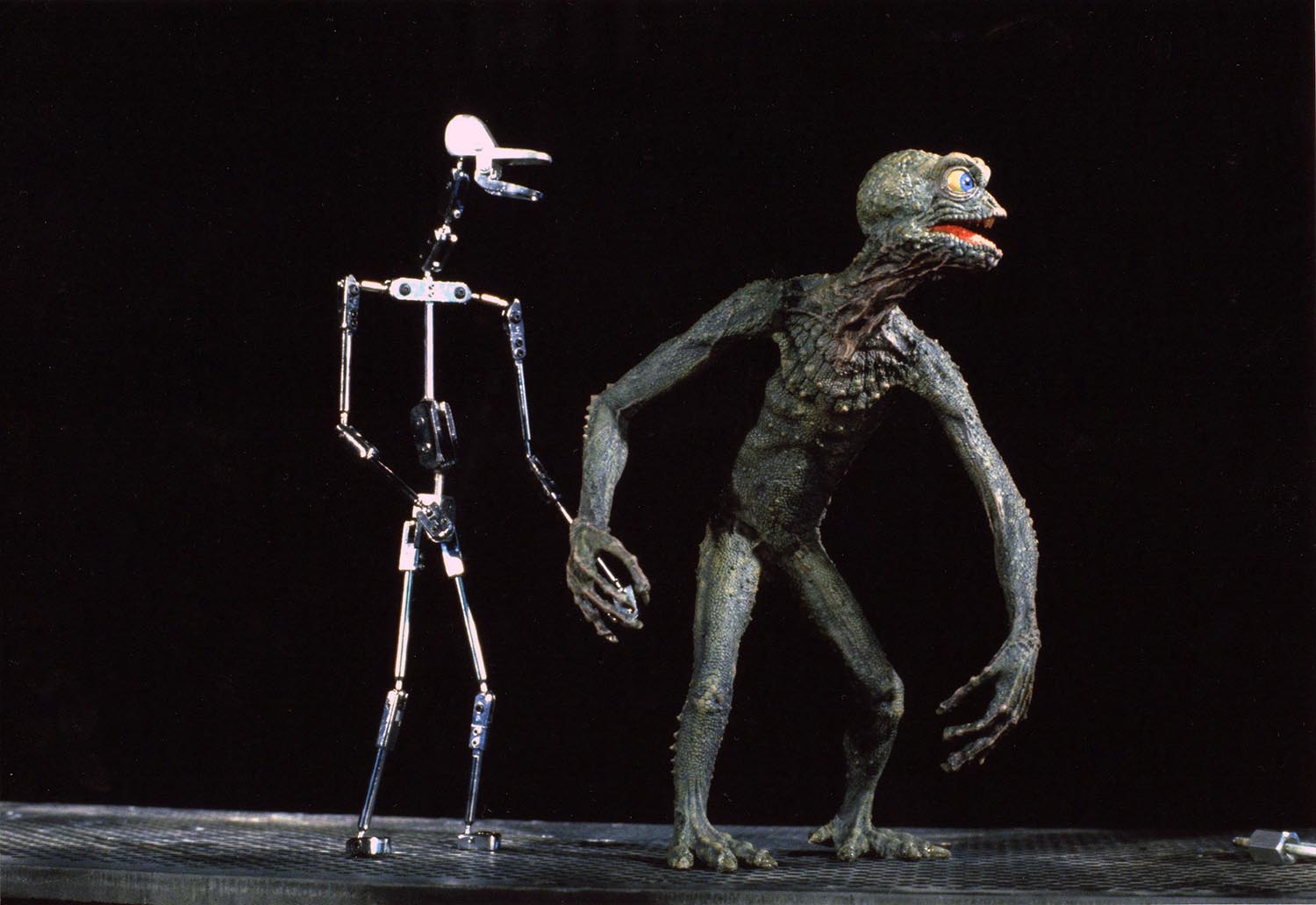
The 1978 team built miniatures and stop-motion puppets, aiming to shoot in a widescreen anamorphic format. Rather than using Harryhausen-style ‘Dynamation’ process of photographing stop-motion against rear- or front-projected backgrounds, Allen planned to composite animated characters into live-action, as he had with Stone Ring, using a frontlight/backlight optical matte technique.
The process involved shooting stop-motion on 35mm motion picture film in two passes for each animated frame: first ‘frontlit’ for a beauty pass and then backlit against a white background. When skip-printed, the backlit pass created a black silhouette. The passes were then to be combined with backgrounds in an optical printer, using the silhouette as a holdout matte. “Every shot was going to be done with the frontlight/backlight matting process,” said Endicott. “I can’t imagine how hard that would have been.”
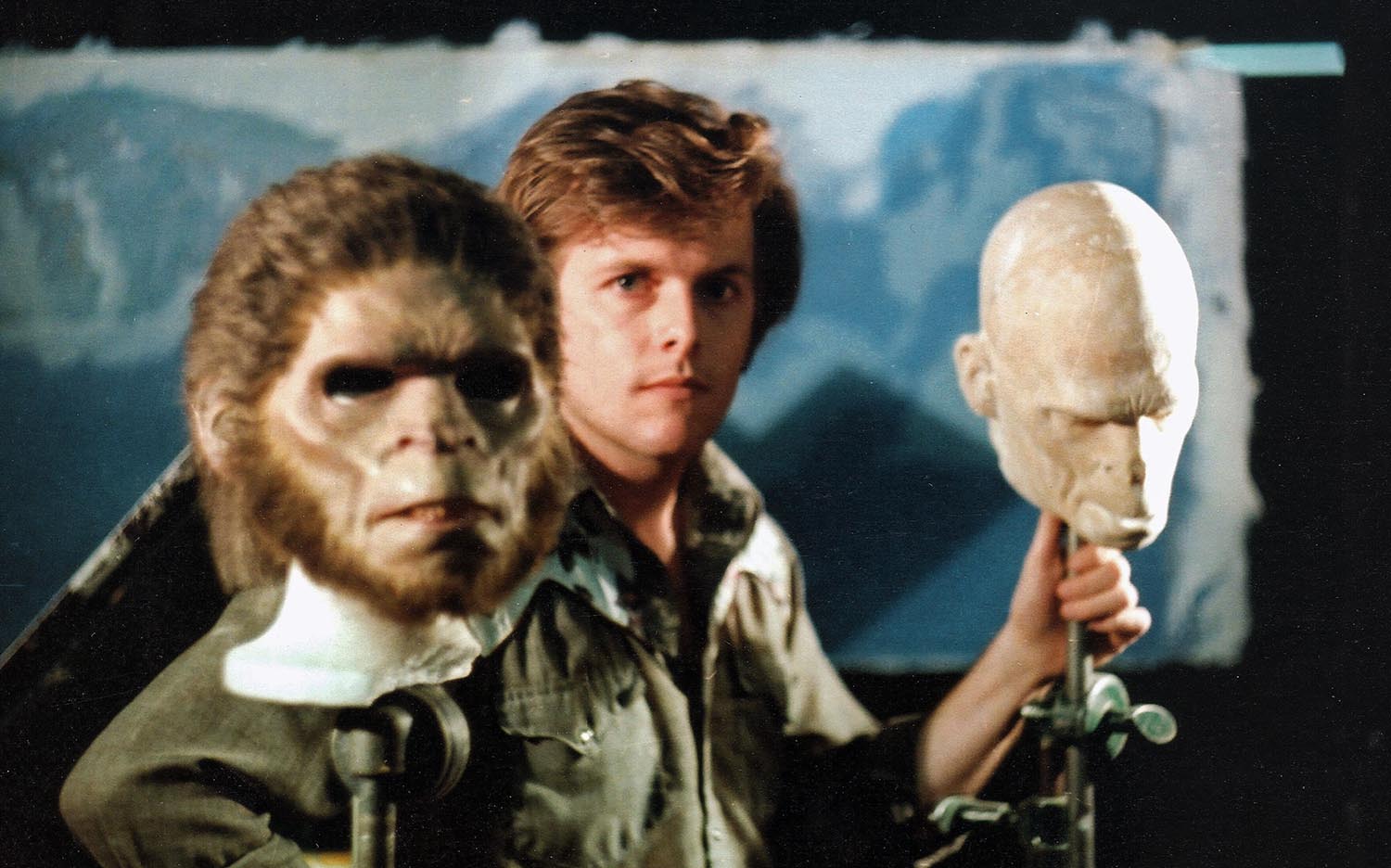
When funding collapsed, the film’s producer Charles Band made use of the momentum of Allen’s effects team by inviting key artists to join another production, a sci-fi horror yarn then known as Vortex, released in 1979 as The Day Time Ended. “That was in production and needed some help,” commented Endicott. “And so almost everybody who was involved on Primevals got put on to Vortex. In that movie, the production shot ‘scope plates, and then they photographed the animation in front of the screen with ‘scope lenses, sort of Dynamation-style.”
Production, 1994
In the 1990s, Charles Band, now working as Full Moon Entertainment, secured funding from Paramount Pictures and gathered Primevals cast and crew in Italy and Romania. Endicott accompanied the ten-week shoot with Allen and cinematographer Adolfo Bartoli, A.I.C., who filmed principal photography in Alpine mountain landscapes and eerie limestone caves. “When we were shooting in the Dolomites,” recalled Endicott, “you can see little waterfalls in the background because it was July and we were losing our snow. And there are some wonderful cave formations in Romania. We had to crawl into those locations to bring in all the gear.”
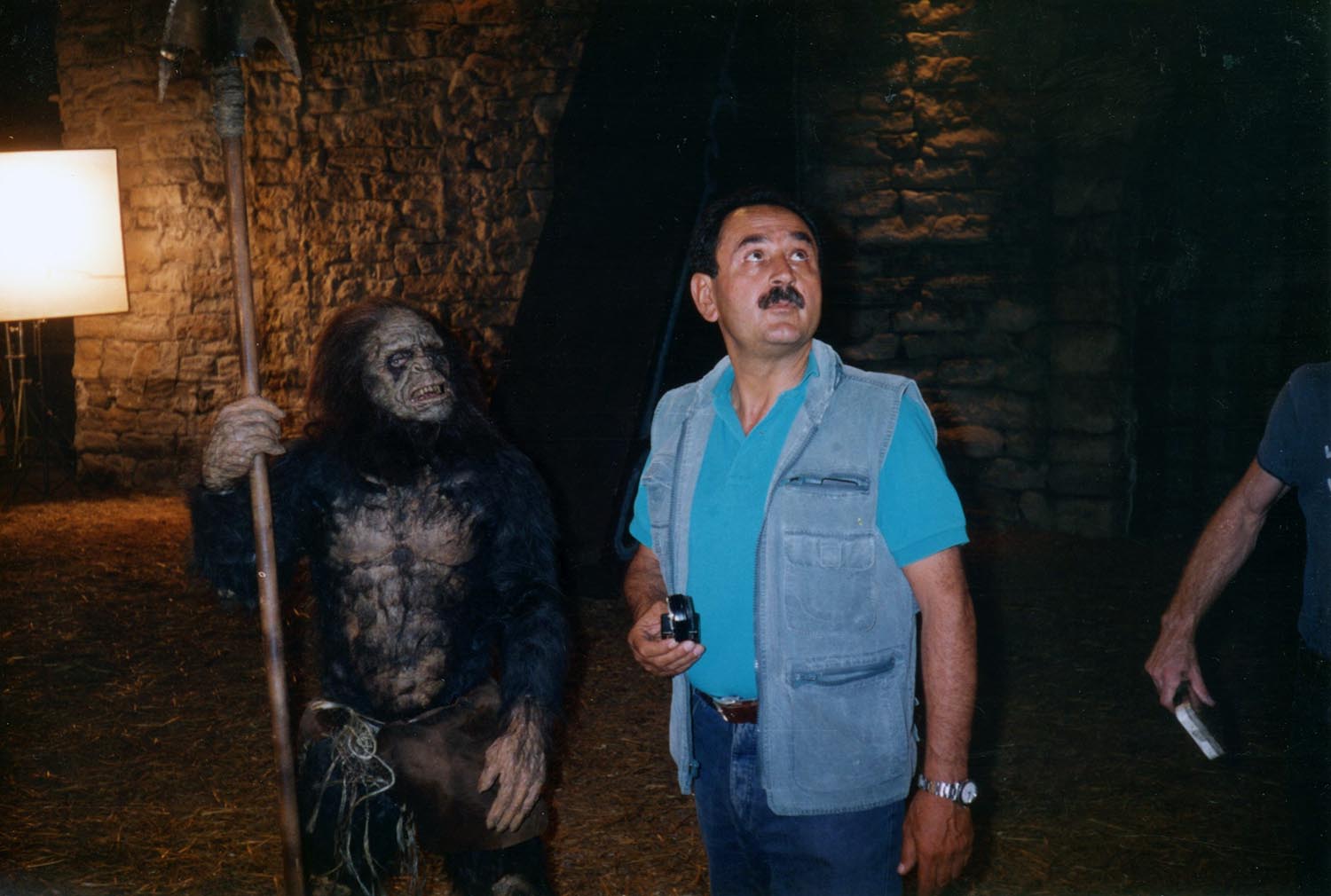
The filmmakers shot background plates on location using horizontally formatted 35mm VistaVision widescreen motion picture footage to capture high-resolution footage for all storyboarded effects scenes. Back in Burbank, Allen refocused efforts. He had long abandoned the idea of using frontlight/backlight animation techniques in favor of using VistaVision plates in Dynamation-style stop-motion projections.
“Some of the designs David had planned in ’78 went through gestation,” Endicott said. “Some miniatures and set pieces were re-art directed for the ’90s shoot. But other elements he kept from the ’70s. The rubber used to cast the Lizard Men puppets no longer existed when we restarted in the ’90s – it was R&D latex, and it hadn’t dried out or turned gummy. So, all the lizard puppets were still in perfect condition.”
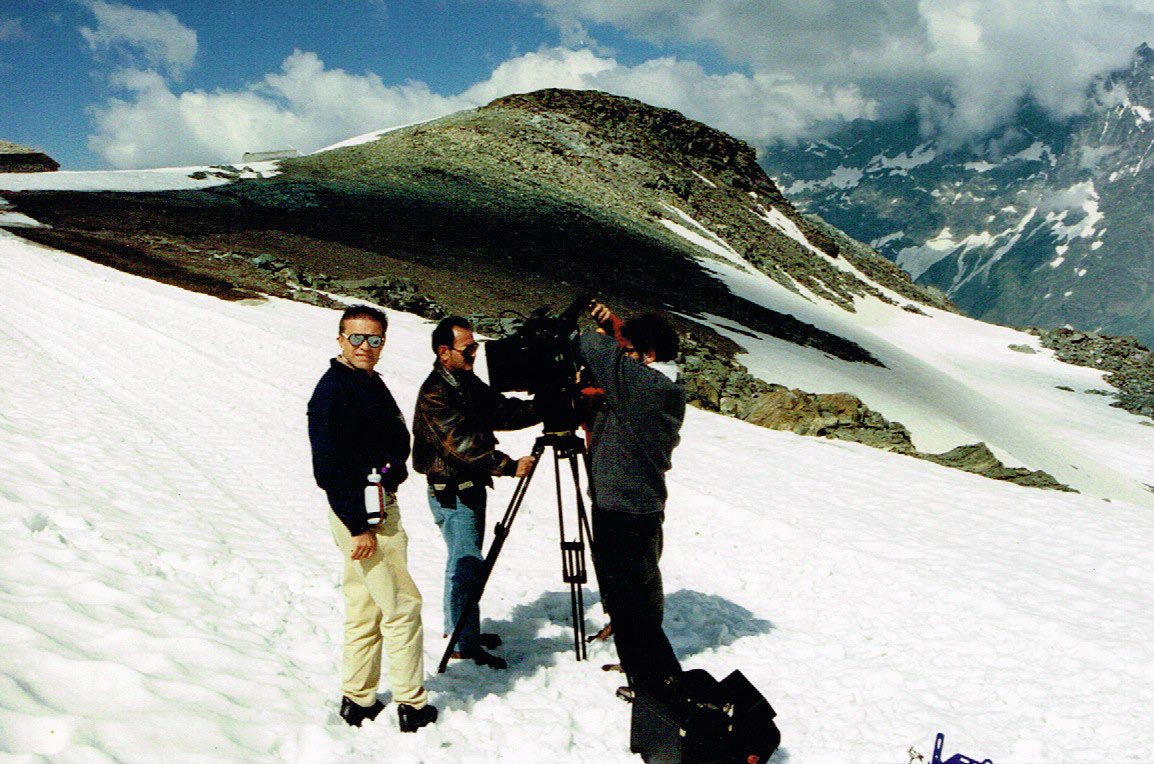
To combat the inherent strobing effects of stop-motion movement, Allen employed early computer solenoid camera controls, engineered by Industrial Light & Magic’s Martin Brenneis, to simulate motion blur in action scenes. In a yeti arm swing, for example, the animator photographed blurring arm motion three times. In the first exposure, the animator posed the arm advancing through its arc. For the second, the camera wound the film back and the animator re-exposed the frame. In the third, the film advanced again.
For each exposure, the animator slightly repositioned only the yeti’s arm. Overlaid in-camera, the triple-exposed yeti arm had a pseudo-blur, resembling motion blur. “Using this helped when we were doing big moves,” said Endicott. “Marty Brenneis named his device the ‘Burbank Three-Step.’”
The production paused again when Paramount parted ways with Full Moon, and Charles Band struggled to find solutions to see the project to completion. Animation continued sporadically until, tragically, on August 16, 1999, David Allen succumbed to cancer at 54 years of age.
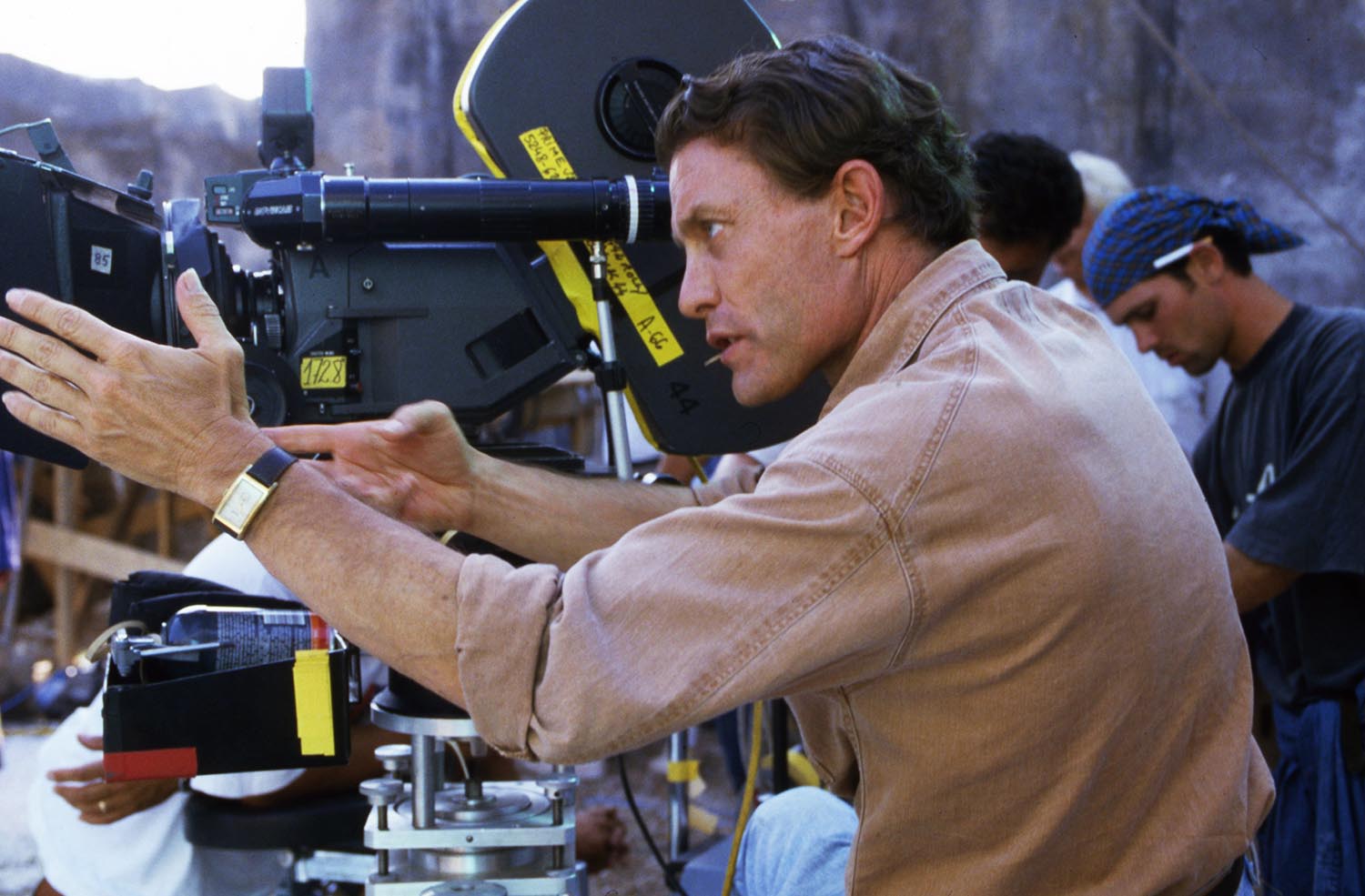
“Dave was working on the picture when he found out he had cancer,” Endicott recalled. “And he continued working on it while he was undergoing chemo. Sometimes, Dave was so sick, he would only shoot a frame or two. And then, eventually, when he couldn’t come in, we kept going. Kent Burton, David’s other animator, was working then, as well. We had a system where we could capture the animation that we were doing on a rudimentary frame-grabbing system. We took a little portable tv set with a tape-recording VHS deck built in, we’d show Dave what was being done on the animation shots, and he gave us comments from the hospital. He was involved to the very, very end. He never gave up. And in Dave’s will, pages and pages dealt with how Primevals was to be completed. It was of primary importance to him.”
Rebirth, 2023
Allen’s tenacity and vision inspired Endicott and his collaborators to mount a crowdfunding initiative which buoyed public interest. Decades later, The Primevals rose again. “Since I had already worked on the film with David in the 1990s,” Endicott said, “he had broken down the script, he had storyboarded all the effects, and there were notes as to how every shot was going to be done. When we picked it up again, the idea was to make it match new shots to how David had planned them. We didn’t go crazy with new technologies. We wanted to make every shot look like the best possible Dynamation composite. We were using modern techniques, but reining in the possibilities and concentrating on David’s original intention.”
At Full Moon’s studio in Glendale, California, Kent Burton joined Endicott as the primary animator shooting stop-motion puppets digitally in shots designed to stylistically match and intercut older, existing Dynamation VistaVision setups that Allen had completed.
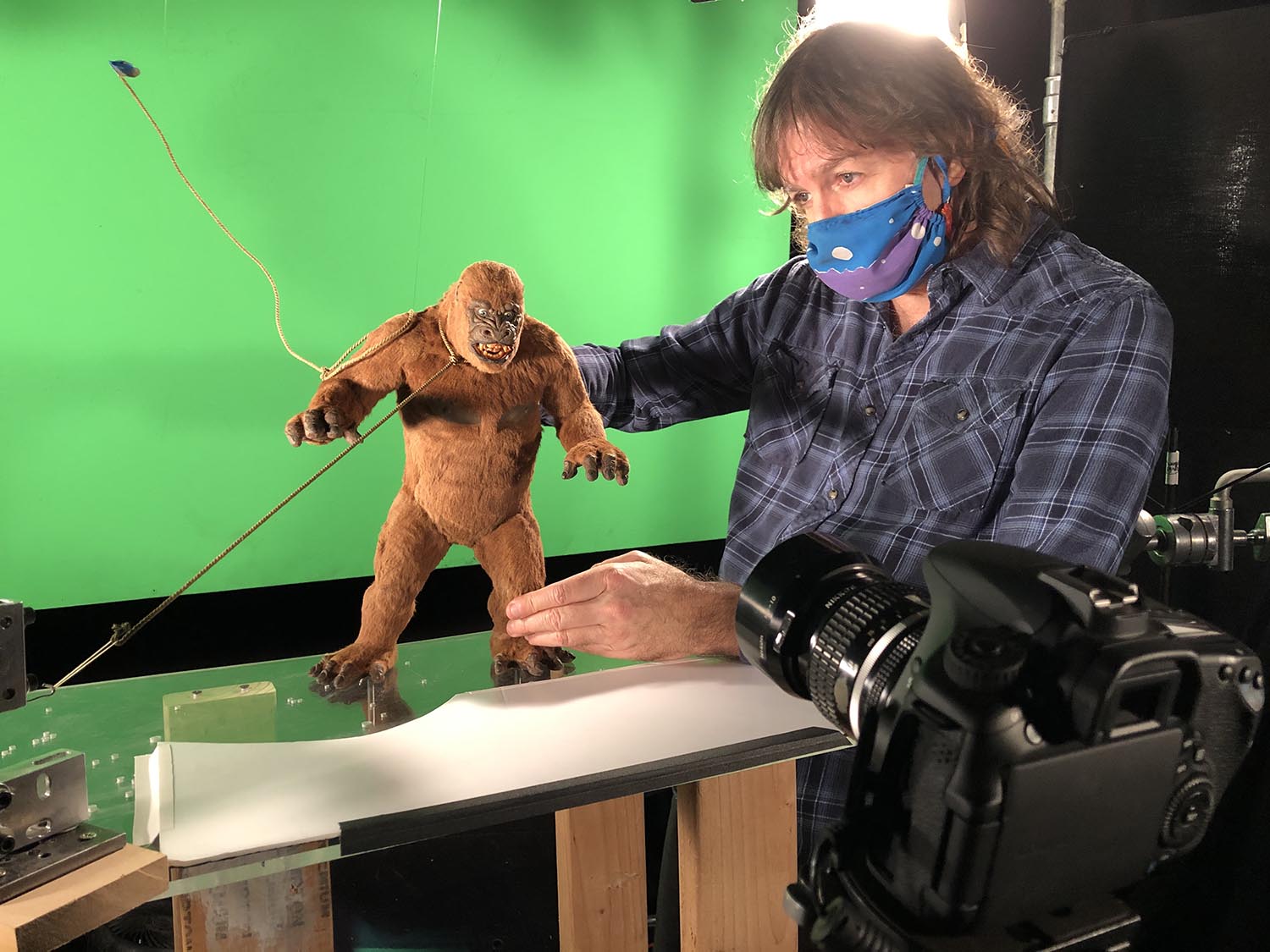
“The shot where the Lizard Man throws Kathleen to the floor in the arena was a Dynamation shot done on film back in the 90s,” said Endicott. “Shots of Lizard Men prodding the Hominids out of their cages were digital versions of the same technique. In the end, it’s a seamless mixture.”
Digital composites of animated characters into VistaVision backgrounds used a split-screen way of thinking that followed character foot-lines in the Dynamation tradition. Flat Earth Digital assembled elements, matching the color temperature and film grain of production footage. “We did it all by eye,” added Endicott. “We made sure not to get too fancy. It wasn’t anything special technique-wise. It was just doing it to taste.”
Three-decade-old footage received subliminal tweaks. “The film was so old that it had some shrinkage, so we had to stabilize that. But we didn’t stabilize it too much, we wanted a little bit of movement. We stabilized shots so we could composite the digital photography. And then, we added a little bit of weave to the digital composite so that wasn’t rock steady.”
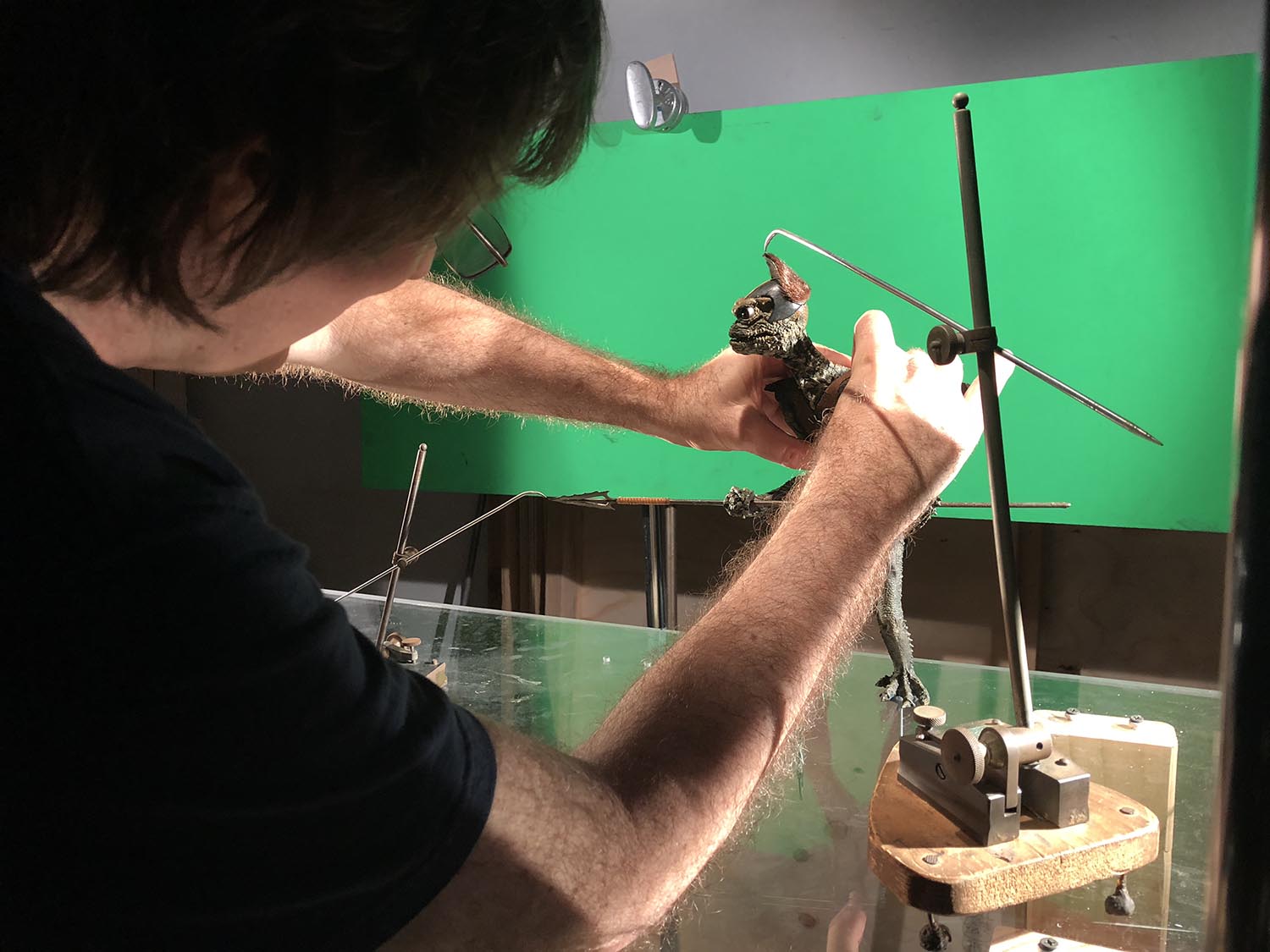
Visual effects collaborators included Kevin O’Neill, Doug Beswick, and Kevin Kutchaver, along with Mark Sullivan at Ice Blink Studios in Ohio who helped restore a climactic action sequence where Matt Connor commandeers alien technology to escape the Lizard Men’s subterranean lair.
“Charlie and I had no money to finish the end of the movie,” Endicott confessed. “Instead, Charlie proposed an ending that intercut [the fates of] the yeti and Dr. Collier – there was no dam breaking and no spaceship. We couldn’t afford any of that. That broke my heart. But Mark Sullivan insisted, ‘We have to do the ending,’ and he came up with a great low-budget idea. Mark found water plates of a dam breaking, and he built the whole thing with miniatures and matte painting elements [composited] to the pre-existing water elements.
Complete with a rousing orchestral score composed by Full Moon maestro Richard Band, The Primevals unspooled at Fantasia Film Festival while two of the film’s creators were in attendance. “Unfortunately, there never was an official cast and crew show,” reflected Endicott. “When we premiered in Canada, Charlie [Band] flew me out there. Charlie, my wife, and I sat next to each other. It was very emotional for Charlie and me. We both cried. Charlie put a lot of money into this, and I put more than three years of sweat equity into it. It felt great. It felt really great.”
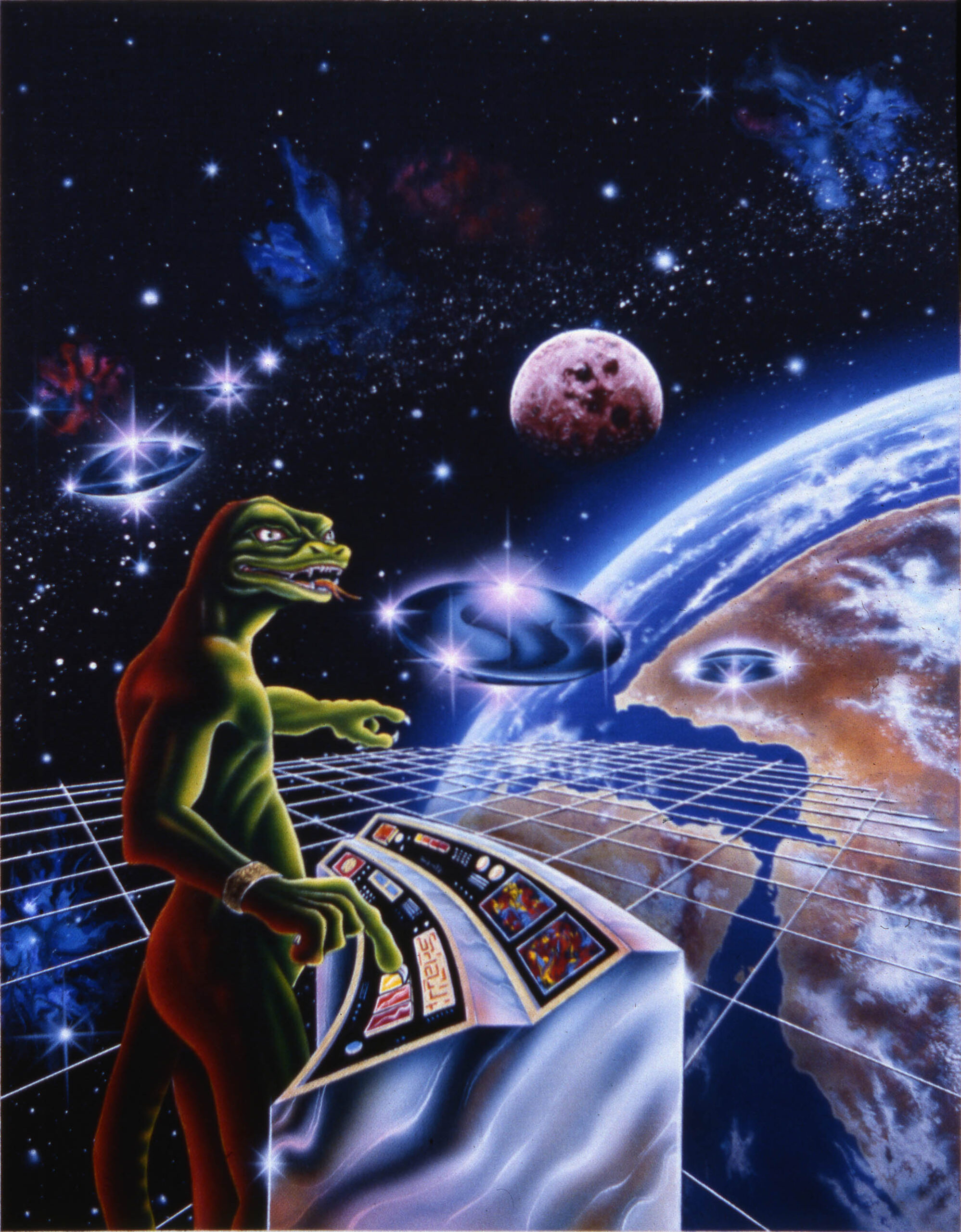

.png)